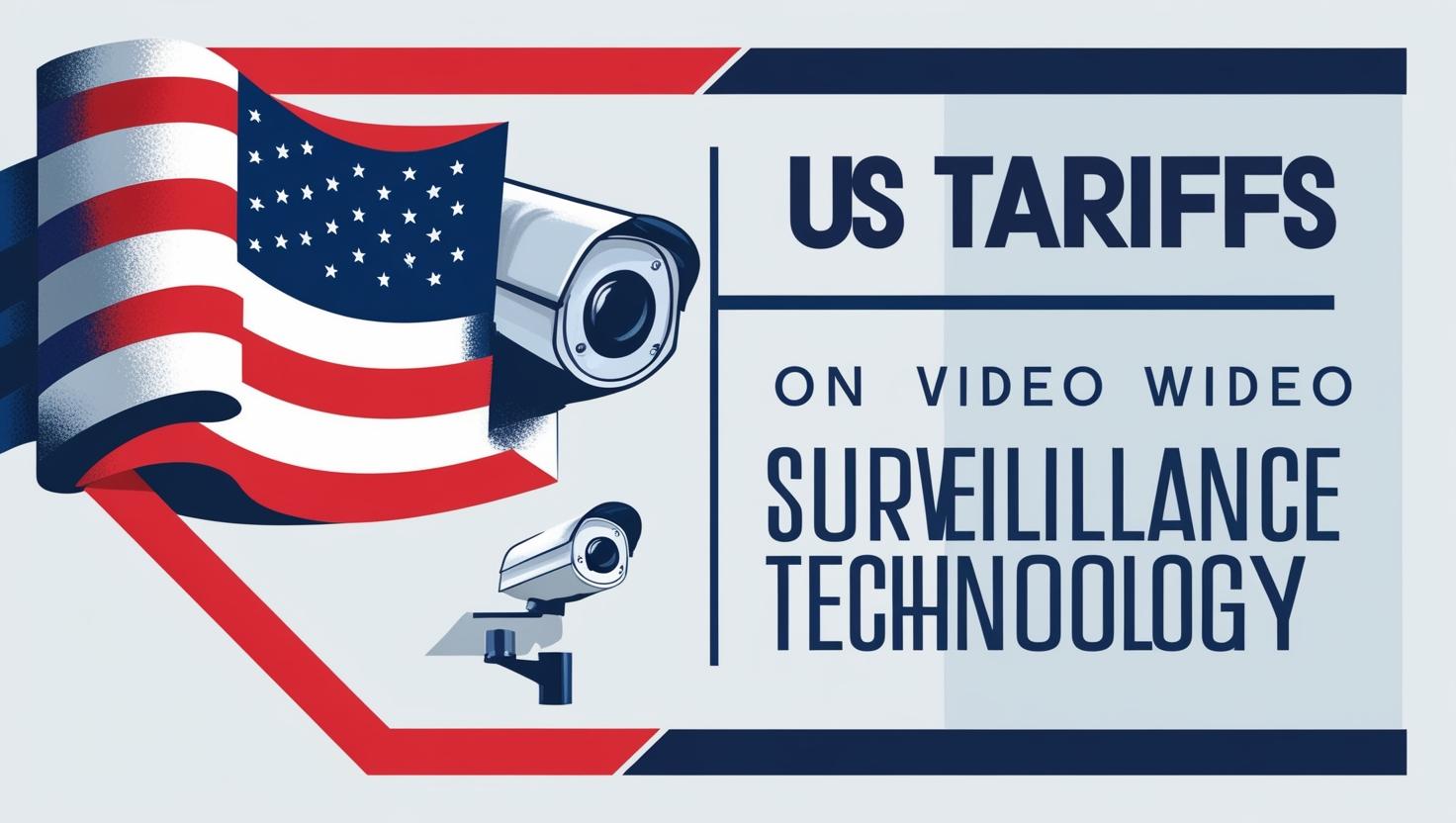Top 10 Growth Opportunities in the Video Surveillance Industry Post Trump Tariffs
The Trump-era tariffs reshaped global supply chains and forced numerous industries - including video surveillance—to rethink sourcing, manufacturing, and go-to-market strategies. While many companies initially viewed tariffs as a disruptive force, the post-tariff environment has unlocked new doors of opportunity for innovation, regional expansion, and technology-led growth in the video surveillance sector.
The Trump administration’s tariffs on Chinese goods, including key components for video surveillance systems, sent shockwaves across the global security technology market. Companies dependent on low-cost imports were forced to reevaluate their supply chains, partnerships, and pricing models. However, rather than halting progress, these challenges sparked a wave of innovation and localization that has reshaped the future of the industry.
One of the most significant shifts has been the acceleration of domestic and nearshore manufacturing. With tariffs inflating costs on imported hardware, U.S.-based companies turned to building in-house or sourcing from allied countries like Mexico, Taiwan, and India. This not only reduced tariff exposure but also brought greater supply chain control and improved product customization. As a result, American surveillance firms gained ground once dominated by Chinese giants.
Book Your “Trump Tariff Threat Assessment”
https://www.marketsandmarkets.com/pdfdownloadNew.asp?id=645
Simultaneously, the industry has experienced rapid growth in cloud-based solutions, AI-powered analytics, and cybersecurity-enhanced surveillance systems. With more end-users demanding smarter and more secure monitoring platforms, companies have invested in value-added offerings such as behavior detection, facial recognition, and real-time alerts. These software-led advancements have helped vendors shift away from price-based competition and toward innovation-led growth.
Now, in the post-tariff environment, the video surveillance industry stands at a turning point. Government investments, public safety initiatives, and private sector demand are converging to create a favorable landscape for U.S. and allied-market players. Whether through smart city deployment, vertical-specific customization, or strategic M&A, the opportunities for sustainable growth have never been more visible. Companies that adapt quickly and strategically to this new era are poised to lead the next phase of the global surveillance technology market.
Here are the Top 10 Opportunities that have emerged in the video surveillance industry post-Trump tariffs:
Domestic Manufacturing Surge
With tariffs raising the cost of imported surveillance hardware, especially from China, many companies have invested in local or nearshore manufacturing. This shift not only reduces import costs but also offers greater supply chain control and resilience.
Opportunity: U.S.-based production facilities and component suppliers are witnessing rising demand, creating growth opportunities for OEMs and assembly service providers.
Diversification of the Supply Chain
Previously China-dominant supply chains are being diversified across Vietnam, India, Taiwan, and Mexico. This move improves geopolitical risk mitigation and cost optimization.
Opportunity: Technology providers and integrators are forming new trade relationships with emerging electronics manufacturing hubs.
Growth in AI-Powered Surveillance
Post-tariff pressure has accelerated the shift from commoditized hardware to value-driven, AI-powered solutions—such as facial recognition, behavior detection, and real-time alerts.
Opportunity: Software-driven surveillance systems are commanding premium prices and opening doors for SaaS-based models.
Increased Demand for Cybersecure Systems
Security concerns around foreign surveillance tech (e.g., Chinese-made systems) have driven interest in cybersecurity-hardened surveillance platforms.
Opportunity: Vendors that integrate strong cybersecurity features (encryption, authentication, data privacy compliance) have a competitive edge.
Government & Critical Infrastructure Investments
Governments at all levels have ramped up funding for “secure and trusted” surveillance infrastructure, especially in transportation, law enforcement, and public safety.
Opportunity: Domestic and allied-system manufacturers are now preferred vendors for federally funded projects.
Growth of Smart Cities
As municipalities continue developing smart infrastructure, video surveillance is becoming a key component of traffic management, public safety, and incident response systems.
Opportunity: Integrated solutions that combine surveillance with IoT, analytics, and cloud computing are in high demand.
Expansion of Cloud-Based Surveillance
Cloud surveillance platforms (VSaaS) have become more attractive due to lower upfront costs, remote management capabilities, and reduced dependency on proprietary hardware.
Opportunity: Cloud-native video management systems (VMS) and storage providers are gaining traction, especially among SMEs and retail chains.
Vertical-Specific Customization
Post-tariff competition is pushing vendors to focus on tailored solutions for specific verticals such as education, healthcare, logistics, and retail.
Opportunity: Surveillance providers that offer industry-specific compliance, analytics, and integration features are better positioned for growth.
Resurgence of American and Allied Brands
With the U.S. government banning Chinese surveillance brands like Hikvision and Dahua from federal projects, American and allied-country brands are gaining market share.
Opportunity: Rebranding and trust-based marketing are boosting visibility and sales for U.S., South Korean, and Japanese surveillance companies.
Mergers & Acquisitions for Tech Acceleration
The post-tariff period has triggered a wave of strategic mergers and acquisitions, as firms seek to bolster their capabilities in analytics, AI, and edge computing.
Opportunity: Mid-size players are being acquired by larger firms seeking to fill technology gaps and diversify product portfolios.
From Trade Shocks to Tech-Driven Growth
The Trump-era tariffs were a wake-up call for the video surveillance industry—highlighting the dangers of overdependence on a single geography and pushing businesses to evolve. In the post-tariff world, those who embrace innovation, supply chain resilience, and cybersecurity leadership are positioned to lead the next wave of growth.
80% of the Forbes Global 2000 B2B companies rely on MarketsandMarkets to identify growth opportunities in emerging technologies and use cases that will have a positive revenue impact.
- Leading Automated Guided Vehicle Companies 2024: An In-depth Analysis
- CHARGED UP: SHIFT TO E-MOBILITY AND THE EVOLUTION OF TRANSPORTATION
- Global Automotive Market: Predictions For 2024
- Revolutionizing Depot Charging: Hockey Stick Growth on the Cards
- The Future of Silicon Battery Industry: Innovations and Market Outlook


